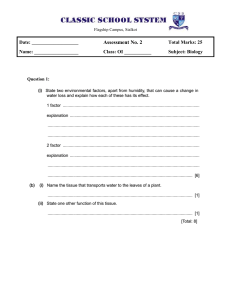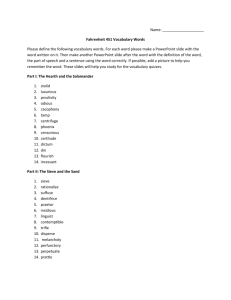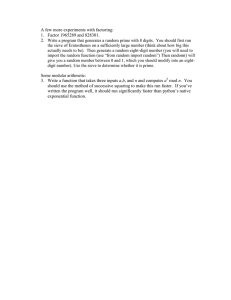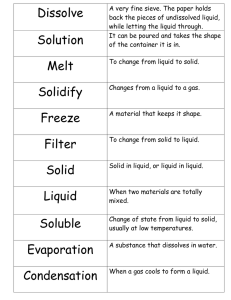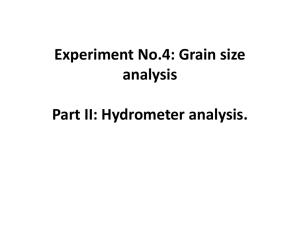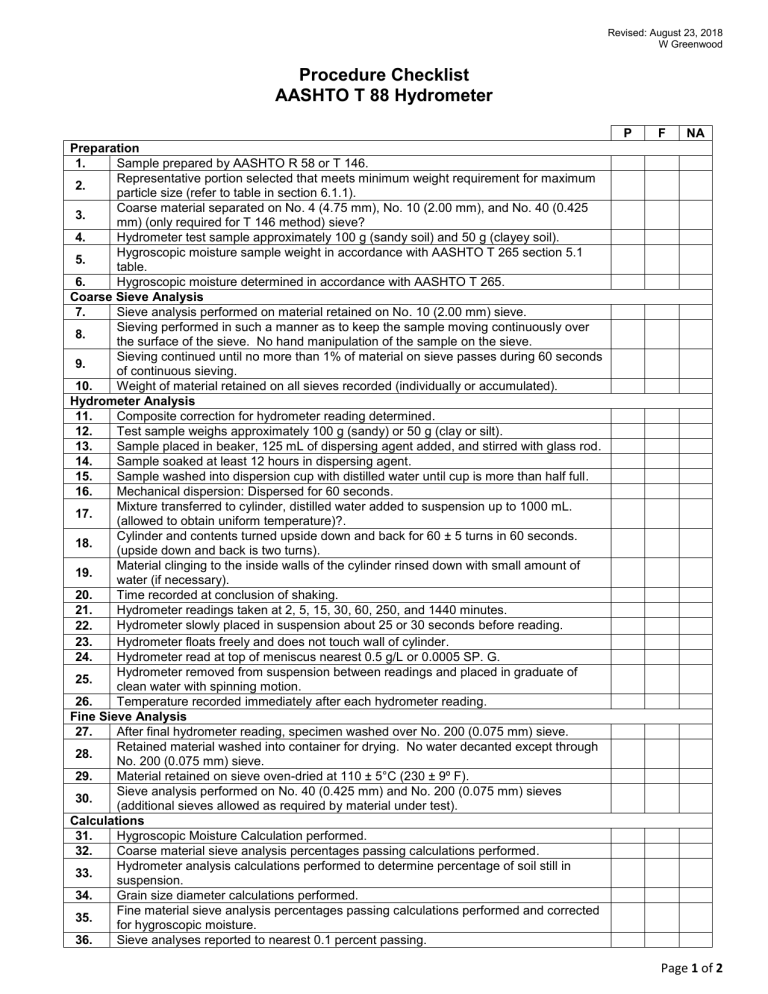
Revised: August 23, 2018 W Greenwood Procedure Checklist AASHTO T 88 Hydrometer P F NA Preparation 1. Sample prepared by AASHTO R 58 or T 146. Representative portion selected that meets minimum weight requirement for maximum 2. particle size (refer to table in section 6.1.1). Coarse material separated on No. 4 (4.75 mm), No. 10 (2.00 mm), and No. 40 (0.425 3. mm) (only required for T 146 method) sieve? 4. Hydrometer test sample approximately 100 g (sandy soil) and 50 g (clayey soil). Hygroscopic moisture sample weight in accordance with AASHTO T 265 section 5.1 5. table. 6. Hygroscopic moisture determined in accordance with AASHTO T 265. Coarse Sieve Analysis 7. Sieve analysis performed on material retained on No. 10 (2.00 mm) sieve. Sieving performed in such a manner as to keep the sample moving continuously over 8. the surface of the sieve. No hand manipulation of the sample on the sieve. Sieving continued until no more than 1% of material on sieve passes during 60 seconds 9. of continuous sieving. 10. Weight of material retained on all sieves recorded (individually or accumulated). Hydrometer Analysis 11. Composite correction for hydrometer reading determined. 12. Test sample weighs approximately 100 g (sandy) or 50 g (clay or silt). 13. Sample placed in beaker, 125 mL of dispersing agent added, and stirred with glass rod. 14. Sample soaked at least 12 hours in dispersing agent. 15. Sample washed into dispersion cup with distilled water until cup is more than half full. 16. Mechanical dispersion: Dispersed for 60 seconds. Mixture transferred to cylinder, distilled water added to suspension up to 1000 mL. 17. (allowed to obtain uniform temperature)?. Cylinder and contents turned upside down and back for 60 ± 5 turns in 60 seconds. 18. (upside down and back is two turns). Material clinging to the inside walls of the cylinder rinsed down with small amount of 19. water (if necessary). 20. Time recorded at conclusion of shaking. 21. Hydrometer readings taken at 2, 5, 15, 30, 60, 250, and 1440 minutes. Hydrometer slowly placed in suspension about 25 or 30 seconds before reading. 22. 23. Hydrometer floats freely and does not touch wall of cylinder. 24. Hydrometer read at top of meniscus nearest 0.5 g/L or 0.0005 SP. G. Hydrometer removed from suspension between readings and placed in graduate of 25. clean water with spinning motion. 26. Temperature recorded immediately after each hydrometer reading. Fine Sieve Analysis 27. After final hydrometer reading, specimen washed over No. 200 (0.075 mm) sieve. Retained material washed into container for drying. No water decanted except through 28. No. 200 (0.075 mm) sieve. 29. Material retained on sieve oven-dried at 110 ± 5°C (230 ± 9º F). Sieve analysis performed on No. 40 (0.425 mm) and No. 200 (0.075 mm) sieves 30. (additional sieves allowed as required by material under test). Calculations 31. Hygroscopic Moisture Calculation performed. 32. Coarse material sieve analysis percentages passing calculations performed. Hydrometer analysis calculations performed to determine percentage of soil still in 33. suspension. 34. Grain size diameter calculations performed. Fine material sieve analysis percentages passing calculations performed and corrected 35. for hygroscopic moisture. 36. Sieve analyses reported to nearest 0.1 percent passing. Page 1 of 2 Revised: August 23, 2018 W Greenwood 37. Hydrometer analysis reported to nearest 0.1 percent smaller than. Comparison Criteria: 2.00 mm (#10 Sieve) – 3.9% Difference 0.425 um (#40 Sieve) – 5.6% Difference 0.075 um (#200 Sieve) – 6.5% Difference Remarks: Date: Technician: IA Observer: Technician’s E-mail Address: Employer’s/ Supervisor’s E-mail Address: Page 2 of 2
